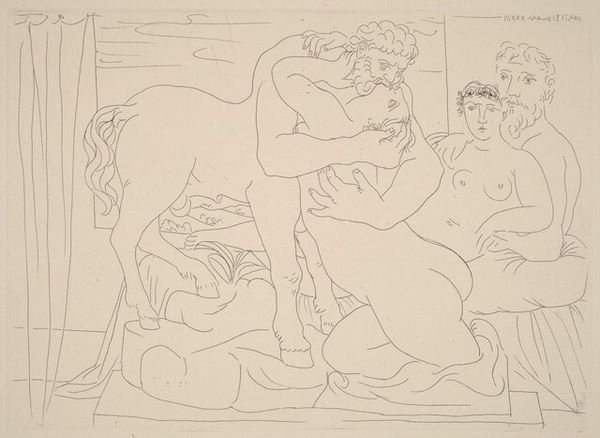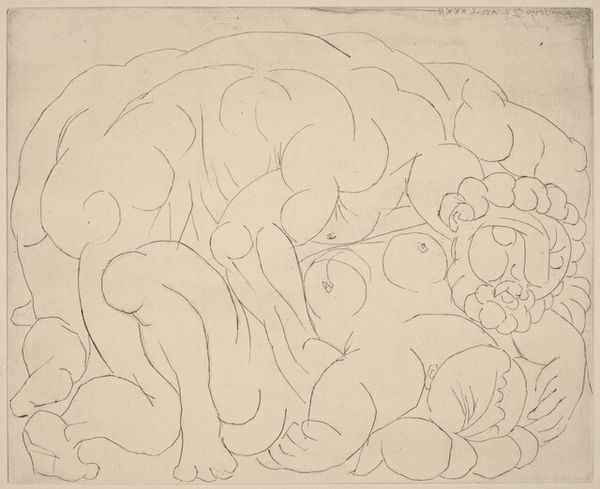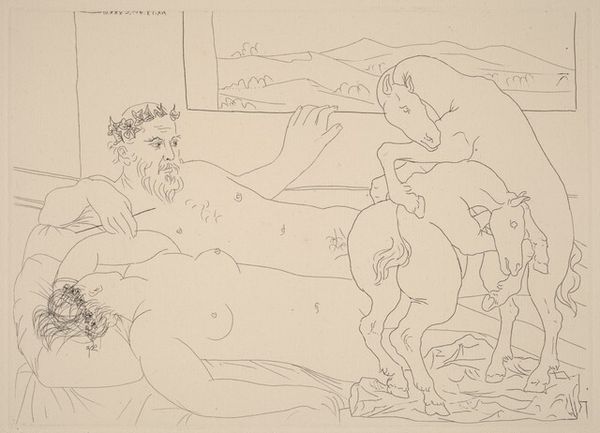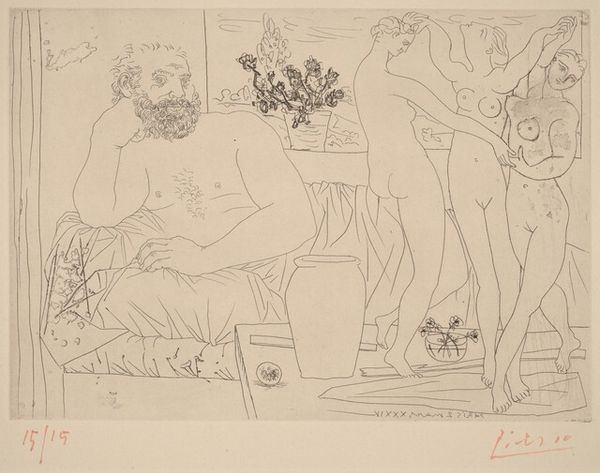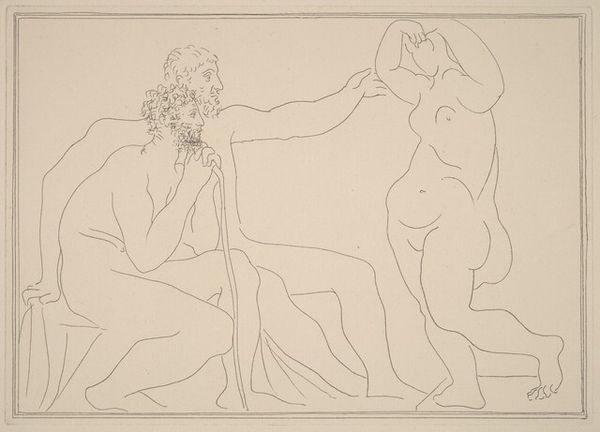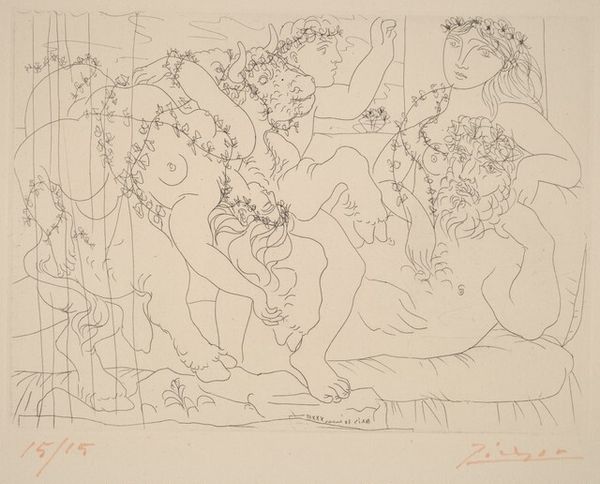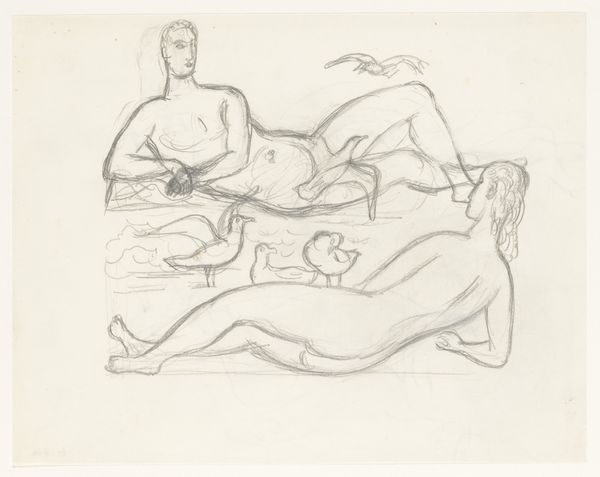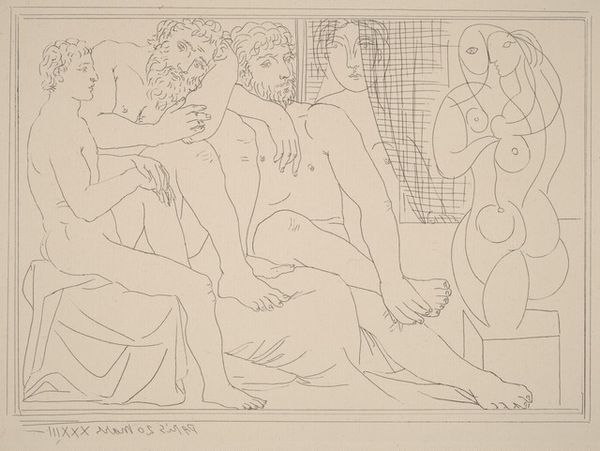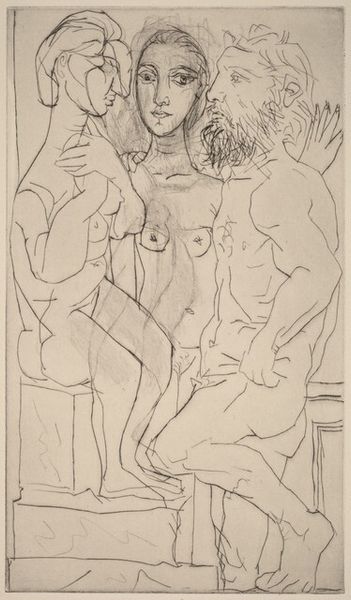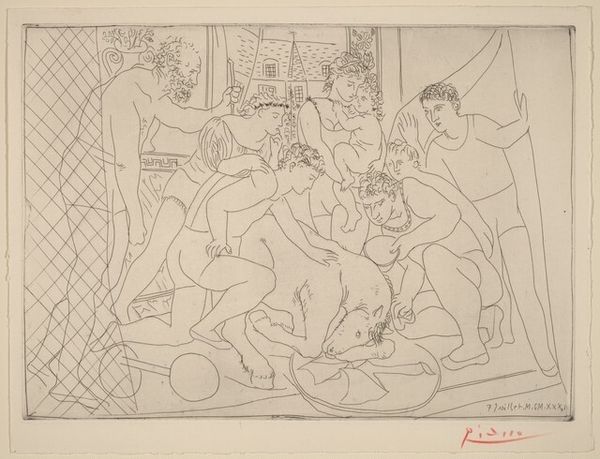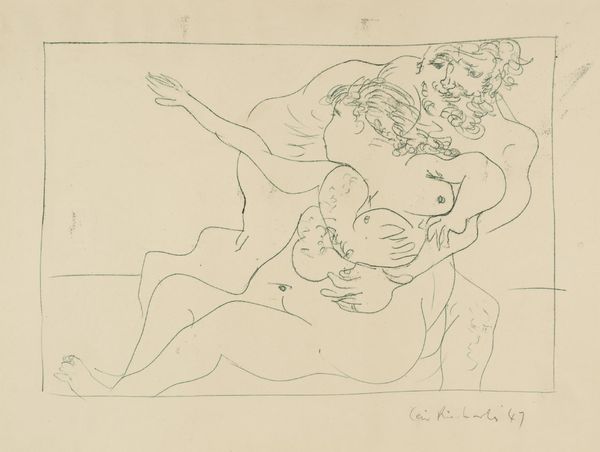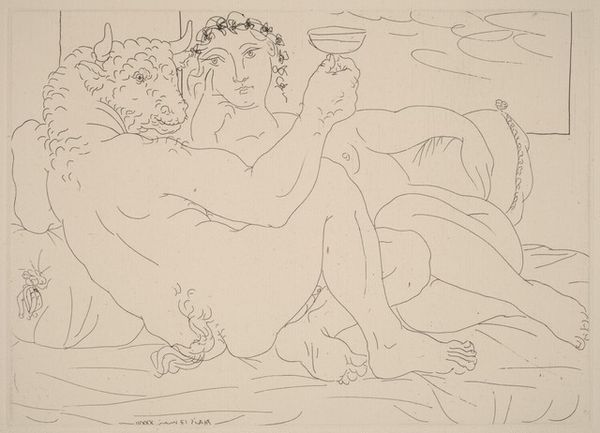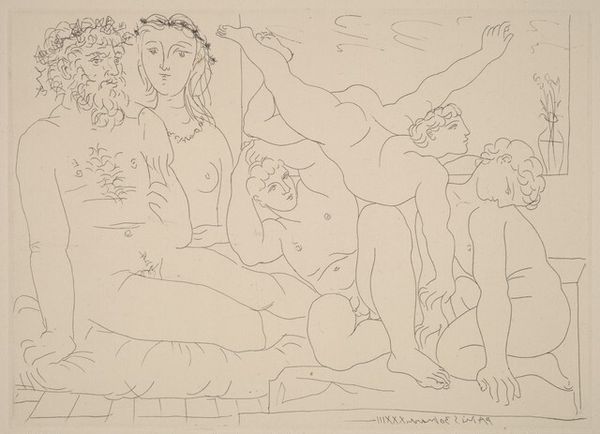
In the Arena. Young Man Kills the Minotaur (Dans l'arène. Jeune homme achevant le minotaure) 1933
0:00
0:00
drawing, print, intaglio, ink, engraving
#
drawing
#
ink drawing
# print
#
pen illustration
#
pen sketch
#
intaglio
#
greek-and-roman-art
#
figuration
#
form
#
ink
#
ancient-mediterranean
#
line
#
history-painting
#
nude
#
engraving
Copyright: National Gallery of Art: CC0 1.0
Editor: Here we have Picasso's 1933 intaglio print, *In the Arena. Young Man Kills the Minotaur*. It feels both classical and unsettling. All those eyes watching... What symbolic weight do you think Picasso is playing with here? Curator: Ah, a perfect question. It's fascinating how Picasso uses the Minotaur myth—a potent symbol of primal instinct and inner conflict – throughout his oeuvre. Here, the arena isn't just a physical space; it becomes a stage for the drama of human versus beast, reason versus impulse. Do you see how the faces in the stands seem detached, almost voyeuristic? Editor: Yes! It's like they’re witnessing a dark performance, maybe even complicit in it. Is it just about personal conflict, or is Picasso commenting on society itself? Curator: Perhaps both are intertwined. Consider the cultural context of 1933: Europe teetering on the edge of fascism. The Minotaur could represent the monstrous forces rising, while the young man embodies a fragile hope for reason and order. But is he truly heroic, or just another player in a brutal game? Look closely at his posture – is it triumphant, or strained? Editor: I see what you mean. His body looks tense, almost reluctant. Maybe it’s not a simple victory of good over evil. It's making me think about how easily those roles can be reversed. Curator: Precisely! Picasso understood that symbols are never fixed. They shift and evolve with our fears, desires, and the stories we tell ourselves. And the echoes of classical myths still resonate, revealing truths about our present. Editor: This has completely changed how I see this piece. I was so focused on the classical references, but now I realize Picasso is using those symbols to talk about something much more immediate and disturbing. Curator: Indeed. It's a potent reminder that the monsters we battle are often reflections of ourselves, and that even in victory, the struggle leaves its mark.
Comments
No comments
Be the first to comment and join the conversation on the ultimate creative platform.
